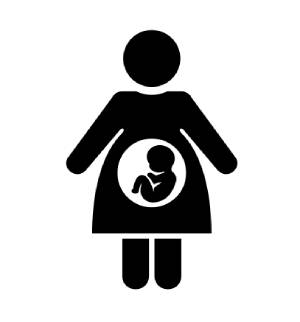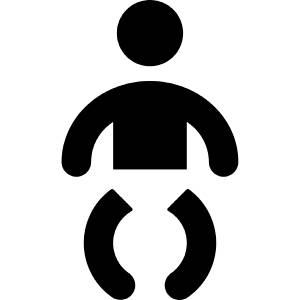
 EFFECTS BEFORE BIRTH
EFFECTS BEFORE BIRTH
We tested whether the relationship between phthalate exposure during pregnancy and preterm birth would be stronger in mothers with higher stress during pregnancy. We used samples from the TIDES study to measure urinary phthalate metabolite concentrations during the three trimesters of pregnancy. We also used reports by mothers of their exposure to stressful life events during each trimester. We found an association between higher levels of one urinary phthalate metabolite and higher rates of preterm birth. This relationship varied depending on whether a mother was exposed to one or more stressors in their life during pregnancy. This result contributes to our growing understanding of how the environment influences pregnancy.
Read the full paper here.
EFFECTS IN NEWBORNS
We used urine samples from pregnant women collected as part of the TIDES study to test whether phthalate exposure during pregnancy is related to reproductive development in children. Specifically, we measured the distance from the anus to the genitals (known as the anogenital distance or AGD) – in babies to see if reproductive tract development was altered by phthalate exposure during pregnancy. Our results showed that exposure to certain phthalates during pregnancy led to shorter AGD in baby boys. Shorter AGD is associated with abnormal reproductive development. More studies are needed to determine whether phthalate exposure during pregnancy has a lasting effect on reproductive development, and whether girls are also affected.
Read the full paper here.
 EFFECTS IN CHILDREN- BEHAVIORAL DEVELOPMENT
EFFECTS IN CHILDREN- BEHAVIORAL DEVELOPMENT
Using TIDES data, we examined how maternal exposure to phthalates during pregnancy related to the behavior of 4- and 5-year-old children. Since most people are exposed to a complex mixture of phthalates in everyday life, we measured nine common phthalates in the urine of TIDES mothers during early and late pregnancy. We examined how the levels of these phthalates related to child behavior and found that higher phthalate exposure during early pregnancy was associated with more behaviors related to autism and worse adaptive skills in children overall. We also found that phthalate exposure in late pregnancy was associated with aggression and hyperactivity in boys. This study helped shed light on the importance of timing of phthalate exposure during pregnancy and how mixtures of phthalates may have harmful effects on child behavior.
Read the full paper here.
EFFECTS IN CHILDREN- ASTHMA
Using data from TIDES, we investigated whether phthalate exposure during pregnancy was associated with childhood asthma. We looked at exposures to phthalate mixtures, rather than exposures to individual phthalates independently. This mixtures-focused approach better represents the complicated mixtures of chemicals that women are exposed to in everyday life. Mixtures with more phthalates of low molecular weight (such as those used in products such as cosmetics, paints, and adhesives) were associated with a higher risk of asthma. We also examined the role of child sex and maternal asthma in our results. Boys showed stronger associations between the level of phthalate exposure during pregnancy and asthma.
Read the full paper here.